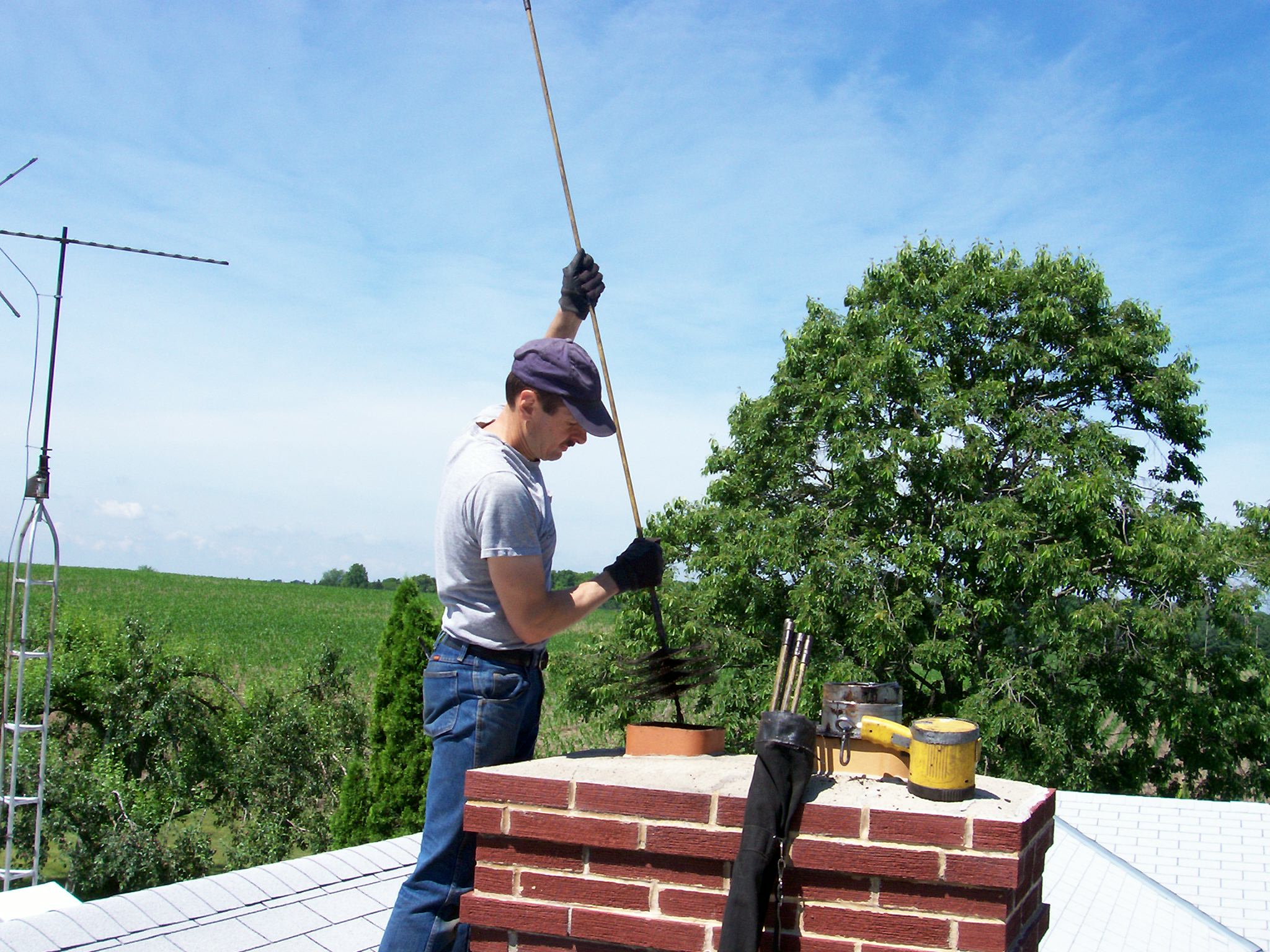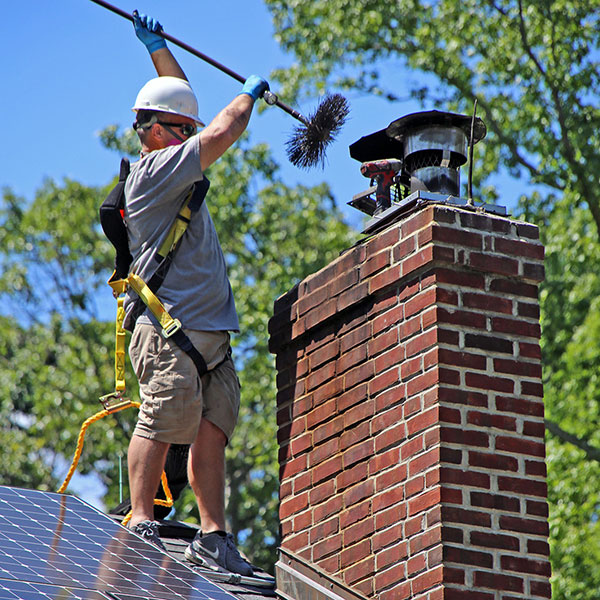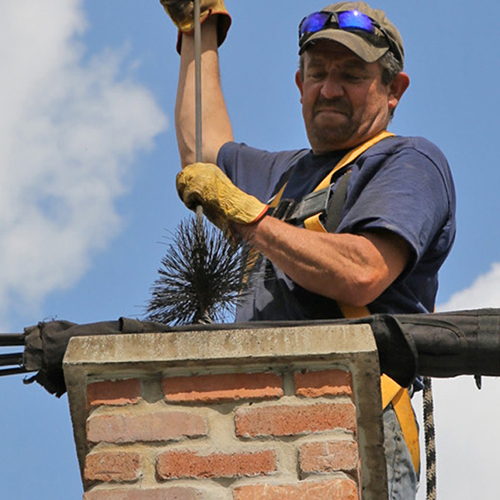Your Fireplace's Buddy: Chimney Clean San Jose for a Comfy and Safe Home
Your Fireplace's Buddy: Chimney Clean San Jose for a Comfy and Safe Home
Blog Article
Chimney Cleaning: A Step-by-Step Guide to Maintaining a Healthy And Balanced Fire Place
Maintaining a healthy fireplace is crucial for the security and efficiency of your home. Regular chimney cleaning is an important part of this maintenance routine. In this step-by-step guide, we will certainly supply you with thorough instructions on exactly how to effectively cleanse your smokeshaft, ensuring that it functions efficiently and decreases the threat of fire threats. By adhering to these guidelines, you will find out just how to gather the necessary devices, carry out a visual assessment, clear particles and accumulation, sweep the chimney, and complete the final steps for ongoing maintenance. With a professional approach and focus to information, you can confidently deal with your fire place and appreciate its warmth and comfort for years to find.
Collecting the Required Tools
To begin the procedure of chimney cleansing, the very first step is to gather all the essential devices. Having the right tools handy makes sure a efficient and safe cleaning procedure. The necessary tools for chimney cleansing include a smokeshaft brush, a ladder, ground cloth or plastic sheets, a flashlight, gloves, and a dust mask.
The smokeshaft brush is the primary tool made use of to remove residue and creosote build-up from the flue - Chimney Sweep San Jose. It is vital to select a brush that matches the size and form of your chimney.
A flashlight is important for inspecting the smokeshaft's inside for any kind of signs of damage or blockages. Handwear covers are necessary to safeguard your hands from soot and other dangerous materials, while a dust mask assists prevent the breathing of debris.
Carrying Out an Aesthetic Examination

Utilizing a flashlight, meticulously examine the interior wall surfaces of the smokeshaft for any signs of damages, such as cracks, loose blocks, or mortar deterioration. These problems can jeopardize the chimney's architectural integrity and posture a severe security threat. In addition, look for any signs of water damage, such as staining or efflorescence, as this can suggest a leaking smokeshaft cap or blinking.
Following, check the smokeshaft flue for any kind of blockages. Seek the existence of nesting materials, leaves, or debris that may have built up gradually (Chimney Sweep San Jose). These blockages can restrict air movement, raise the threat of carbon monoxide gas accumulation, and hinder the chimney's ability to efficiently vent smoke
Throughout the aesthetic evaluation, pay close focus to the smokeshaft crown, which is the top surface that protects the smokeshaft from dampness. Search for fractures or missing items in the crown, as these can allow water to go into the smokeshaft and create substantial damages.
Cleaning Debris and Accumulation
After finishing the visual examination, the next step in smokeshaft cleaning involves clearing up debris and build-up to ensure the correct functioning of the fire place. In time, particles such as leaves, branches, and pet nests can build up in the smokeshaft, blocking the flow of air and causing possible fire dangers. Additionally, the build-up of creosote, a tar-like compound, is an usual problem in smokeshafts. Creosote is developed when timber or fossil gas are burned, and otherwise eliminated on a regular basis, it can cause smokeshaft fires.
A smokeshaft brush, especially designed for find more information this purpose, is utilized to eliminate loose debris and creosote from the chimney wall surfaces. It is crucial to choose a brush that matches the size of your chimney to guarantee effective cleaning.
To begin, place the brush right into the smokeshaft and relocate backwards and forwards, rubbing the walls to dislodge any debris or creosote. Utilize a sweeping movement to guarantee thorough cleaning. It is recommended to start from all-time low and work your way up. Once the brushing is complete, use a vacuum or a chimney brush extension to remove the dislodged particles from the fire place.

Sweeping the Chimney
The sweeping of the smokeshaft is an essential action in maintaining a healthy fireplace. Gradually, residue, creosote, and other debris can build up in the chimney, obstructing the flow of air and potentially triggering a dangerous build-up of combustible materials. Routine chimney sweeping not only ensures correct air flow yet likewise stops the risk of chimney fires.
When it involves smokeshaft sweeping, it is very advised to employ a professional chimney sweeper. These experts have the knowledge and devices needed to safely and effectively remove the gathered particles from your chimney. They will generally begin by covering the fire place to avoid any kind of soot or particles from entering your home. Utilizing specialized brushes and vacuum cleaner devices, they will after that clean up the smokeshaft inside out, ensuring that all the build-up is completely eliminated.
It is essential to keep in mind that the frequency of smokeshaft sweeping depends on numerous elements, such as the sort of fuel used, the quantity of use, and the type of smokeshaft. As a general guideline, it is recommended to have your smokeshaft swept and checked at the very least yearly.
Last Steps and Maintenance
After completing the chimney sweeping process, the initial action in the last maintenance is to check the smokeshaft cap and trigger arrestor. These components prevent particles, animals, and rainwater from entering the chimney.

Check the within the fireplace for any kind of indicators of wear and tear, such as splits, loose bricks, or damaged mortar. These issues can impact the structural stability and security of the fire place. Consult a professional chimney sweep or mason to address them promptly. if any troubles are detected.
Finally, consider installing carbon monoxide detectors near the fireplace and throughout your home. These gadgets can find the visibility of this hazardous gas, supplying an early warning system in case of a chimney breakdown. Frequently inspect and replace the batteries in these detectors to guarantee their effectiveness.
Verdict
In verdict, adhering to a detailed overview for chimney cleansing my sources is critical in preserving a healthy fireplace. By collecting the required tools, performing an aesthetic evaluation, clearing debris and build-up, and sweeping the smokeshaft, home owners can make sure the safety and efficiency of their fire place.
The necessary tools for smokeshaft cleaning consist of a chimney brush, a ladder, decline cloths or plastic sheets, a flashlight, gloves, and a dirt mask.
A chimney brush, especially created for this purpose, is made use of to get rid of loosened debris and creosote from the smokeshaft walls. Normal chimney brushing up not only makes certain appropriate air flow however additionally stops the risk of chimney fires.
When it comes to chimney sweeping, it is extremely recommended to employ a professional chimney move. After completing the chimney sweeping procedure, the first action in the final maintenance is to inspect the chimney cap and trigger arrestor.
Report this page